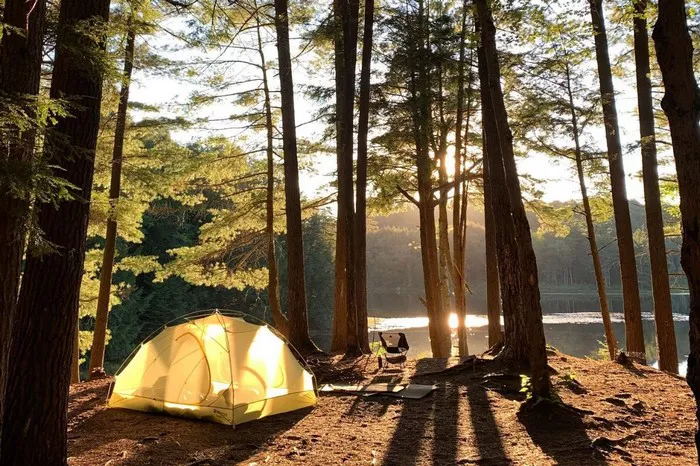Camping is an excellent way to connect with nature and escape the hustle and bustle of everyday life. Planning a long camping trip requires careful preparation. Knowing what to bring can make your experience enjoyable and comfortable. Below is a detailed guide on essential items to pack for your adventure.
1. Shelter and Sleeping Gear
Tent
Choose a tent that fits your group size and is appropriate for the weather conditions. Ensure it is waterproof and easy to set up. Consider a tent with good ventilation for warm weather.
Sleeping Bag
Select a sleeping bag rated for the temperature you expect. A three-season bag is versatile for most conditions. Look for one with insulation that compresses well for packing.
Sleeping Pad
A sleeping pad adds comfort and insulation from the cold ground. Inflatable pads are lightweight and packable. Foam pads are durable and affordable but bulkier.
Pillow
Bring a travel pillow or stuff your clothes into a stuff sack to create a makeshift pillow. Comfort is essential for a good night’s sleep.
SEE ALSO: When Do State Parks Open for Camping?
2. Cooking Equipment
Portable Stove
A camping stove is essential for cooking meals. Choose a propane or butane stove for ease of use. Always bring extra fuel.
Cookware
Pack lightweight pots and pans. A small pot for boiling water and a frying pan for cooking are usually enough. Consider nesting cookware to save space.
Utensils
Bring a spatula, ladle, and cutting knife. Don’t forget eating utensils like forks, spoons, and a can opener.
Plates and Cups
Lightweight, durable plates and cups are necessary. Consider using reusable options to reduce waste.
Food and Snacks
Plan meals ahead of time. Pack non-perishable items like pasta, rice, canned goods, and dehydrated meals. Include plenty of snacks, like nuts, granola bars, and dried fruit.
Cooler
If your trip allows, bring a cooler for perishables. Choose a high-quality cooler that keeps ice for several days.
3. Clothing
Layered Clothing
Dress in layers to adapt to changing temperatures. Include moisture-wicking base layers, insulating mid-layers, and waterproof outer layers.
Hiking Boots
Invest in a pair of sturdy, comfortable hiking boots. Ensure they are broken in to prevent blisters.
Extra Socks
Bring several pairs of moisture-wicking socks. Change them frequently to keep your feet dry and comfortable.
Weather Gear
Pack a waterproof jacket and pants for unexpected rain. A warm hat and gloves are essential for cooler nights.
4. Personal Items
First Aid Kit
A well-stocked first aid kit is crucial. Include bandages, antiseptic wipes, pain relievers, and any personal medications.
Toiletries
Bring biodegradable soap, toothpaste, toothbrush, and toilet paper. A compact towel is useful for drying off.
Sunscreen and Insect Repellent
Protect your skin from the sun and bugs. Choose a broad-spectrum sunscreen and a DEET-based insect repellent.
Trowel
A small trowel is necessary for digging a cat hole if there are no restroom facilities.
5. Navigation and Safety Gear
Map and Compass
Even if you have a GPS device, carry a physical map and a compass. Technology can fail, and knowing how to navigate manually is essential.
Headlamp or Flashlight
A reliable light source is crucial for navigating at night. Bring extra batteries to ensure you don’t run out of power.
Multi-tool or Knife
A multi-tool is invaluable for various tasks, from food prep to gear repairs. A good camping knife is also essential.
Emergency Whistle
An emergency whistle can help signal for help if needed. It’s lightweight and easy to carry.
6. Recreation and Entertainment
Books or E-Reader
Reading can be a great way to unwind after a day of hiking. An e-reader saves space compared to physical books.
Playing Cards or Board Games
Bring along some lightweight games for entertainment during downtime. They are excellent for group bonding.
Camera
Capture your adventures with a camera or smartphone. Make sure to bring a portable charger if needed.
7. Outdoor Gear
Backpack
A good-quality backpack is essential for carrying your gear. Look for one that fits comfortably and has enough capacity for your trip length.
Trekking Poles
Trekking poles can help reduce strain on your knees and provide stability on uneven terrain.
Water Filtration System
Staying hydrated is vital. Bring a water filter or purification tablets if you plan to source water from streams or lakes.
Dry Bags
Use dry bags to keep your gear dry, especially in wet conditions. They are great for protecting clothing, electronics, and food.
8. Food and Cooking Tips
Meal Planning
Plan your meals in advance. Consider the number of days and the type of food you can prepare. Pack foods that are lightweight and high in energy.
Cooking Methods
Think about how you’ll cook your meals. A campfire can add flavor but requires more preparation than a portable stove. Always follow fire safety rules.
Trash Bags
Leave no trace. Bring trash bags to pack out all waste. This helps preserve the environment for future campers.
9. Miscellaneous Essentials
Rope or Paracord
Rope is useful for hanging food out of reach from animals or creating a clothesline. Paracord is strong and has many uses.
Duct Tape
Duct tape can repair almost anything. It’s lightweight and takes up little space in your pack.
Firestarter Kit
A firestarter kit is essential for cooking and warmth. Bring waterproof matches, a lighter, and fire starters like cotton balls soaked in petroleum jelly.
Portable Charger
If you plan to use electronics, a portable charger is essential for keeping your devices powered.
Conclusion
Preparing for a long camping trip can be a rewarding experience. By packing the right gear, you’ll ensure a comfortable and enjoyable adventure. Remember to consider the specific needs of your group and the environment you’ll be in. With careful planning and the right equipment, you’ll be ready to explore the great outdoors and create lasting memories. Happy camping!
Related topics:

